Authors:
ABSTRACT
Aim
The main goal of this study was to compare the coronal microleakage of MTA and IRM®, using the dye penetration technique in primary molars.
Methods
Study design: 160 extracted primary molars (caries-free or not) were used and randomly distributed among four groups of study (n=30) and four groups of controls, two positive (n=10) and two negative (n =10). Class II type cavities were created in 140 molar crowns and 120 of those were randomly restored with IRM or MTA. A dye penetration technique was used to evaluate the coronal microleakage. One group of each restorative material and one of each positive and negative control were kept submerged in a methylene blue solution for 24 hours, and the other groups and controls were kept in the solution for 28 days. The penetration of the colouring solution was examined under the microscope in two different locations, the coronal axial wall and the proximal cavity.
Results
The samples of the positive control group showed full penetration of blue methylene and the samples of the negative control group showed no penetration at all. MTA showed lower filtration than IRM; the results were statistically significant (p<005) in both axial and proximal cavity. Both IRM and MTA groups did not revealed significant differences at 24 hours and 28 days. Statistics: The SPSS 13.0 software was used for the statistical analysis of the collected data. The study results were analysed using an independent sample t-test and the one-way Anova test. CONCLUSIONS: The results of this study show that, when used in primary molar pulpotomies MTA showed in fluid filtration tests results significantly lower than obturations with IRM.
PLUMX METRICS
Publication date:
Keywords:
Issue:
Vol.18 – n.3/2017
Page:
Publisher:
Cite:
Harvard: J. Farto, C. Canalda Sahli, J. R. Boj (2017) "Microleakage of MTA in primary molar pulpotomies", European Journal of Paediatric Dentistry, 18(3), pp183-187. doi: 10.23804/ejpd.2017.18.03.03
Copyright (c) 2021 Ariesdue

This work is licensed under a Creative Commons Attribution-NonCommercial 4.0 International License.
